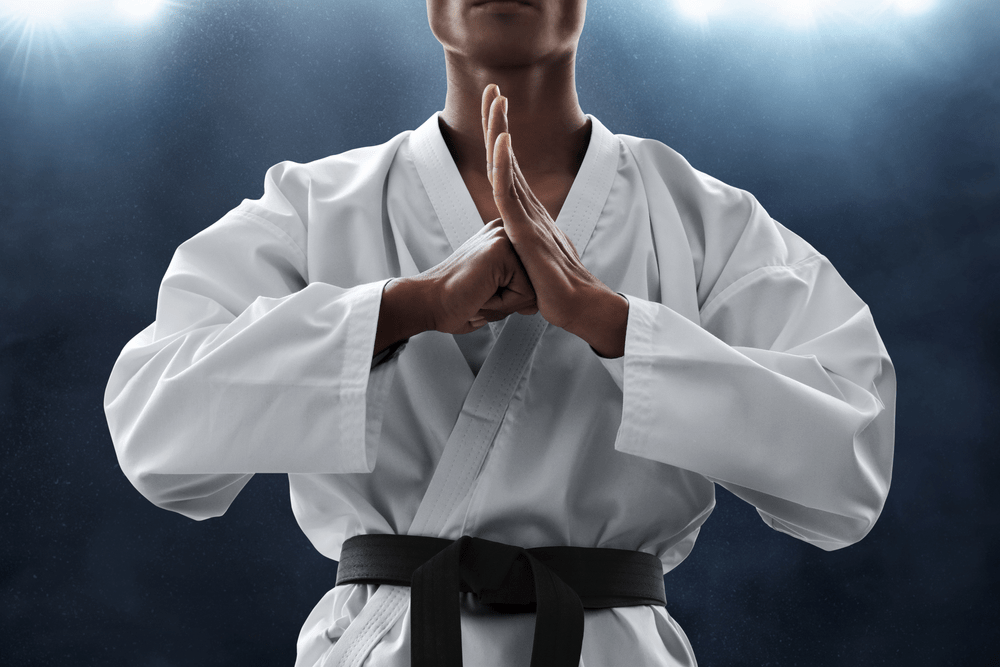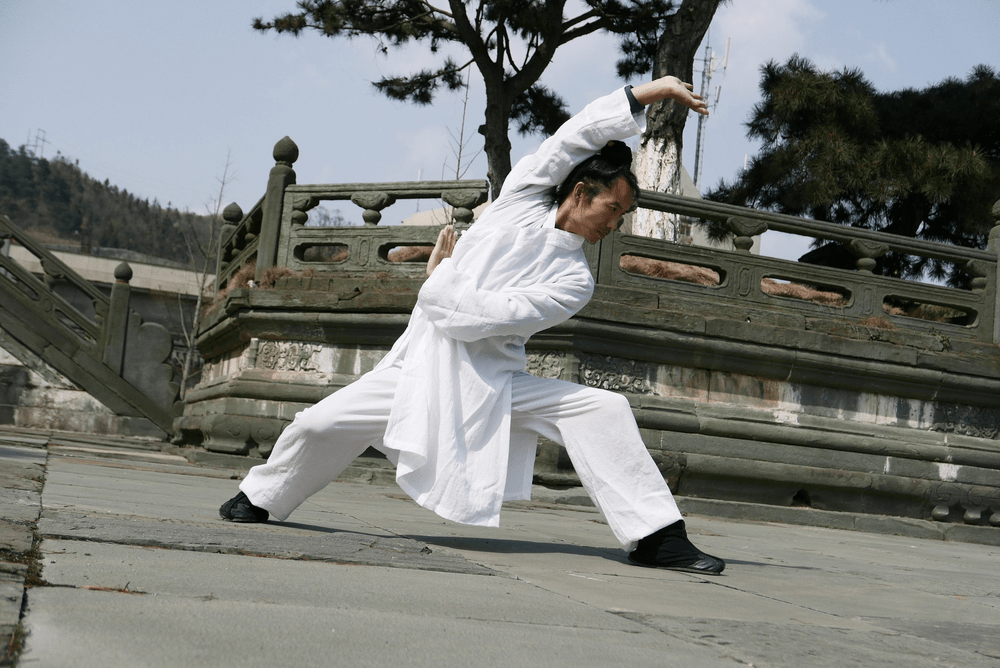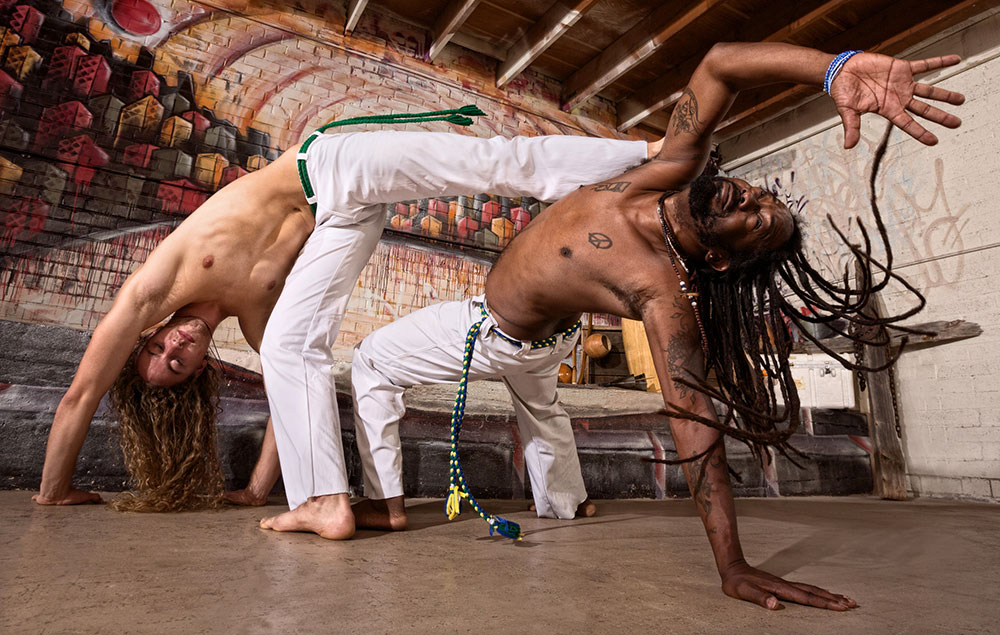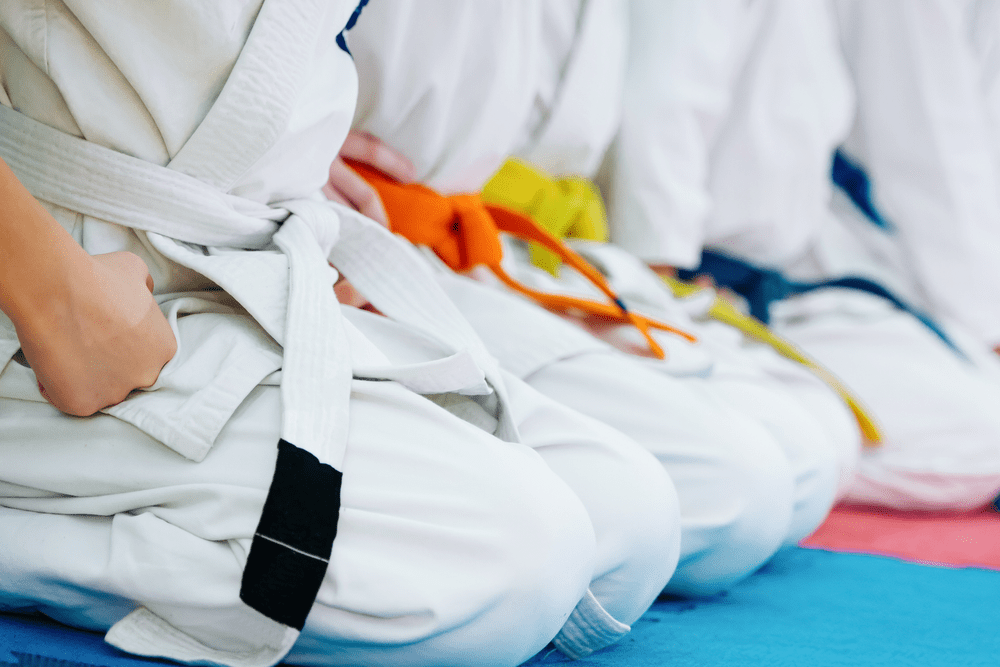Looking to become a martial arts expert, but unsure of which discipline to pursue? We’ve got you covered with today’s guide to the most popular types of martial arts around the world.
View in gallery
Did you grow up watching martial artists in awe and wonder, marveling at their ability to master such skill, and want to learn how they do it? Or, do you want to learn self-defense or a new sport and are considering martial arts?
Whatever the reason behind your fixation with martial arts, it’s important to first learn about the different fighting styles.
Table of Contents
What Are Martial Arts?
Martial arts are a fighting skill set or sport. Many martial arts originated in Asia. However, as knowledge spread, new forms were also created in other parts of the world.
Any child of the ’80s will have Mr. Miyagi’s voice whispering in their head, informing them that the concept behind many of the different types of martial arts is self-defense. However, that does not mean the skills learned cannot and are not put to the test in real-life combat situations.
While many of the different martial arts may seem the same to the untrained eye, intricate differences set them apart from one another. Practitioners of each art form often dedicate their entire lives to martial arts training.
How Many Types of Martial Arts Are there?
There are about 180 different types of martial arts globally, comprising thousands of fighting styles, techniques, and forms. Most of the renowned martial arts styles originated from Asia, but we also have some from other parts of the world.
Japanese Martial Arts
Japan is home to some of the most popular and influential martial arts in the world. In addition, Japanese martial arts such as jujitsu, judo, and karate have a significant mark on many newer styles worldwide.
Judo
View in gallery
Judo is a modern Japanese martial art developed by Kano Jigoro in 1882. Kano was a student of jiu-jitsu, one of the oldest martial arts in Japan. Jiu-jitsu is a close-combat fighting system, where practitioners learn many fatal moves.
Kano Jigoro developed judo to create a fighting style that allowed one to subdue an enemy without using the deadly techniques used in Jujutsu.
Judo focuses on taking the opponent down with grappling techniques, immobilizing them without causing grievous injury. Primary practices employed in judo are throwing, grappling, and striking.
Students practice extensively in break-falls to avoid injury during training.
Many modern martial arts have derived from judo, including krav maga, sambo, and Brazilian jiu-jitsu. In addition, many mixed martial arts styles also incorporate grappling techniques from judo.
Aikido
View in gallery
Aikido is another of the modern Japanese martial arts developed during the 1920s and 1930s by Morihei Ueshiba. Ueshiba developed aikido after many years of studying various martial arts.
One such martial art that heavily influenced the techniques he included in Aikido was Daito-ryu Aiki-jujutsu.
Ueshiba wanted to create a fighting system where practitioners could defend themselves while preventing injury to the attacker. For example, aikido training involves joint lock and throws techniques that enable practitioners to redirect their opponent’s attack and subdue them.
Karate
View in gallery
Karate existed in East Asia for centuries before its systematization in Okinawa, a Japanese island in the East China Sea. Okinawa was part of the Ryukyu kingdom, which the Japanese Empire later annexed in 1879.
But, karate didn’t become popular in mainland Japan until the early 20th century, when people migrated from Okinawa in search of jobs. The Japanese Martial Arts Committee recognized the art as a Japanese martial art in 1933.
Karate is a self defense oriented martial art form focusing on striking, kicking, and defensive blocking. Hands, knees, the forearm, elbows, and heel are all used to deliver strikes or block attacks.
Practitioners learn to focus their body’s power on the body part making contact with the opponent to deliver maximum impact.
Jiu Jitsu
View in gallery
Jiu Jitsu is a Japanese martial arts style that has spread worldwide. Brazilian jiu jitsu is a branch of this popular self-defense martial art form popularized by the Gracie brothers.
As a martial arts style, Japanese Jiu Jitsu is an armed and unarmed combat system. The first known writings relating to Jiu Jitsu date back to 700AD. The earliest known styles date back to around the year 1100. Jiu Jitsu has since provided elements to many other martial arts including, judo, aikido, sambo, ARB, Brazilian jiu-jitsu, and mixed martial arts
As with many martial arts, Jiu Jitsu is a self defense system as much as it is an attacking one. It combines techniques that include punches, kicks, throws, and joint locks to create a combat technique that subdues or even kills your attacker.
As with all forms of martial arts, proper technique is essential and extensive time is spent learning how to defend and how to fall before progressing.
Chinese Martial Arts
Chinese martial arts have a long history, evident in that they influenced some of the oldest fighting systems in Asia.
They continue to influence modern fighting arts significantly, and many people are familiar with the term Kung Fu thanks to Chinese martial arts films.
However, many mistake Kung Fu as a single martial art when it’s, in reality, an umbrella term for many forms of martial arts from China. Let’s look at three major Kung Fu branches that form this martial arts style.
Tai Chi
View in gallery
Tai Chi is very likely the most popular Chinese martial art today because it’s practiced not only for self-defense but also as a health exercise and form of meditation.
It is also known as Taiji Quan and was developed by Zhang San Feng, a Daoist monk who’s also the patriarch of Wudang Mountain Kungfu (Wudang Quan).
Wudang Kungfu is a class of Chinese martial arts that focuses on utilizing the mind to control the body. These are known as internal practice martial arts.
Tai Chi characterizes slow, smooth movements, circle walking, and static postures. Elements of tai chi as a form of self-defense include hand and weapon routines and striking techniques.
This form also incorporates meditation, breathing, and awareness exercises.
Bagua Zhang

Like Tai Chi, Bagua Zhang is an internal practice martial art. The art was introduced by Dong Haichuan, a martial artist who learned it from Buddhist and Taoism masters in Chinese mountains.
The primary aspect of Bagua Zhang is circle walking. Practitioners walk around a circle while maintaining a low stance as they perform various moves and change direction.
The constant movement and evasive footwork learned during training allow artists to escape attacks while looking for the best instant to counterattack.
Fighters can use any part of their body to attack the opponent. To do this, trainees need to build strong muscles and develop core strength.
Weapons are also part of many Bagua Zhang fighting. For example, the. The double-edged straight sword, spear, staff, and the Bagua broadsword are some of the weapons used.
Shaolin Kung Fu
View in gallery
While the Wudang style incorporates internal styles, Shaolin kung fu comprises external practice styles and originated at a Buddhist temple (Shaolin Temple) in Henan province.
Bodhidharma, an Indian Buddhist monk who lived in the Shaolin temple, is credited with teaching Chinese monks the martial arts known as Shaolin kung fu.
As a result, Chan philosophy heavily influenced the martial arts style. Chan Buddhism is a sect connected to Bodhidharma.
The major techniques are kicking, hitting, grabbing, and wrestling. However, while all kung fu styles utilize all of these techniques, some forms emphasize a preferred technique.
Basic skills learners acquire in training include balance, flexibility, and stamina. Combat skills include weapon and barehanded fighting styles.
Kung fu covers multiple styles, including dragon claw, tiger claw and eagle claw kung fu.
Korean Martial Arts
Between 1910 to 1945, Korea was under Japanese rule. During this period, most Korean martial artists studied Japanese martial arts and Chinese Kung Fu.
The martial artists who developed modern Korean martial arts derived many techniques and forms from the two foreign fighting systems.
Besides these hybrid martial arts styles, Korean ancient martial arts like Taekkyon are also widely practiced.
Taekwondo
View in gallery
Unlike most martial arts disciplines, Taekwondo (or Tae Kwon Do) has no single creator. Instead, it’s the result of various martial arts styles combined with traditional Korean martial arts to preserve the nation’s indigenous fighting styles.
After years of Japanese rule, Chinese and Japanese martial arts took root while indigenous styles faded to the background. This was something the Korean martial arts school sought to solve.
They developed Tae kwon do from Chinese, Japanese, and indigenous Korean fighting styles. Its main defining techniques are kicking and punching.
There are no weapons included in Tae kwon do. Instead, practitioners attack and defend with their feet and hand strikes, with an emphasis on agility. Unlike other martial arts that focus on stability to deliver attacks or defend appropriately, Taekwondoins concentrate on delivering fast kicks, which calls for a narrower stance.
Taekwondo is an Olympic sport, having first featured in the games in 2000.
Hapkido
View in gallery
Most martial arts either focus on close-range or long-range attack and defense techniques. However, Hapkido is a Korean martial art style that includes both.
It employs striking techniques like judo, jumping kicks like karate, and joint locks and throws familiar to aikido.
Hapkido derives many kicking and striking techniques from indigenous Korean arts like Tang Soo Do and Taekkyon.
Like Bagua Zhang, Hapkido focuses on gaining an advantage over the opponent through body positioning and footwork. In this manner, practitioners use circular movements to avoid attacks.
Besides the mixed combat styles, the hybrid nature of Hapkido is also present in its utilization of both soft and hard techniques. Soft techniques are like what you’d find in Tai Chi, which focuses on subduing an enemy without returning brute force.
Hard techniques are physically aggressive, where attacking the opponent is just as crucial as blocking or redirecting their attacks.
Thai Martial Arts
Southeast Asia, which includes countries like Thailand, Cambodia, Myanmar, and Malaysia, is home to popular martial arts.
Thai martial arts are some of the ancient fighting styles that have managed to maintain relevance and popularity today. Like the arts from East Asian countries, they’ve inspired many modern self-defense and fighting styles.
Muay Thai
View in gallery
Muay Thai is undoubtedly one of the most popular martial art combat sports today. The art goes back to the 16th century when soldiers of King Naresuan practiced it as a fighting system. Muay Thai was first introduced as a sport in 18th century Thailand.
Punching and striking are the main focus of Muay Thai techniques. Practitioners use knees, elbows, feet, and fists to deliver kicks, strikes, and punches. Fighters use the elbow to deliver uppercut, diagonal, and flying strikes.
Half-knee, step-up, roundhouse, and jumping are kicking techniques in Muay Thai. Clinching is also involved, including neck wrestling, in which position fighters get to use elbow and knees techniques.
Krabi Krabong

Krabi Krabong is one of the most popular weapon-based martial arts. Most of its styles are dependent on weapon techniques, with standard arms including the curved sword, single-edged sword, stick, bladed staff, and shield.
An unarmed martial arts style utilizing kicks, holds, joint locks, throws, and pressure point strikes also exists.
Ancient Thai warriors first used Krabi Krabong to survive on the battlefield, developing their fighting techniques to subdue the enemy and cause fatal injury.
Martial arts that heavily influenced Krabi Krabong’s martial arts style are Banshay from Myanmar and the Indonesian martial arts style Pencak Silat. Krabi Krabong, on the other hand, influenced Muay Thai.
Cambodian Martial Arts
Martial arts are an essential part of Cambodian history and culture. Performances of traditional martial arts are a common sight during festivals in the country.
While some ancient Cambodian martial arts faced extinction at some point, they’re now reviving as more schools pass on the knowledge of these traditional fighting techniques to young students.
Bokator
View in gallery
Bokator is a close-quarter combat system initially used by Khmer armies in battles. Khmer refers to the ethnic people of Cambodia. The martial art focused on striking and ground fighting, with hand to hand and weapon techniques utilized.
During the Khmer Rouge regime from 1975-1979, Bokator faced extinction as the government pushed for an agrarian communist country. People who went against the directive were detained or executed, including those the government deemed intellectuals.
There was no place in the nation for martial arts, and many artists quit practicing in fear for their lives. The Khmer Rouge was ousted by the Vietnamese, who occupied the country and outlawed native martial arts.
One of the Bokator martial artists, San Kim Sean, who fled the country after the Khmer Rouge regime, returned in 1992, three years after the Vietnamese vacated Cambodia.
He started teaching Bokator to youth in Phnom Penh with government approval, hoping to revive the almost lost art.
Kim Sean also tracked down many Bokator instructors who had stopped practicing and persuaded them to come back and reintroduce Bokator to the people.
He also founded the Cambodia Bokator Federation in 2004, and since then, the art has been growing in the country.
Other Martial Arts
We’ve mentioned that many Asian martial arts influenced the development of several modern styles. Next, we’ll look at some of the other popular contemporary martial arts worldwide that derive their forms, techniques, and styles from the list of martial arts mentioned above.
Krav Maga
View in gallery
Krav Maga is a martial art developed by Imi Lichtenfeld for the Israel Defense Forces. Lichtenfeld was a Hungarian-Israeli Jew who grew up in Bratislava, Slovakia.
He fled the country when anti-semitic riots plagued Bratislava, seeking refuge in Mandatory Palestine, which later became part of the state of Israel.
Growing up, Lichtenfeld was a professional boxer and wrestler who won national championships in both disciplines.
However, while defending his neighborhood from anti-semitic groups, he realized that his skills from combat sports were not good enough in street fights.
After leaving the country, he started developing a practical martial art style for use in real-world situations. Hence, Krav Maga was born.
To create Krav Maga, Lichtenfeld combined the most practical techniques from wrestling, boxing, aikido, judo, and karate. His goal was to create a highly effective combat system that would come in handy in aggressive fights.
Trainees learn to defend against attacks while delivering strikes to their opponents simultaneously. Krav Maga emphasizes attacks on vulnerable parts of the body such as the groin, eyes, and throat to finish a fight as quickly as possible.
Mixed Martial Arts
View in gallery
Mixed Martial Arts (MMA) is a full-contact combat sport that utilizes styles and techniques from all martial arts. Fighters in this sport usually train in more than one martial arts style, all of which they can use during fights.
The first known existence of a mixed martial art combat sport is the Pankration, an ancient Greek Olympic game. It joined the Olympics in 648BC, and fighters were allowed to use any fighting technique against their opponent.
The only rule in Pankration prohibited biting and eye-poking—all else was game. An emperor later banned this game from the Olympics, and it wasn’t until the 20th century that a similar sport reappeared.
In the 1920s, two Brazilian brothers (Gracie brothers) who ran a jiu jitsu school in Rio de Janeiro created a challenge where they invited practitioners of various martial arts to a no-holds-barred combat match.
There was a lot of criticism of the mixed martial arts style, but it became more accepted by introducing rules and regulations.
In 1993, the first UFC fight happened, won by the son of one of the Gracie brothers. Today, MMA, promoted by the Ultimate Fighting Championship (UFC), is one of the most popular combat sports.
Capoeira
View in gallery
Capoeira has an interesting story, as it was developed by African slaves in Brazil who were banned from practicing any form of fighting or self defense. A descendant of the Angolan “Engolo” tradition of spiritual dance, slaves were able to practice their martial abilities while disguising it as mere dancing.
Many will debate the merits of this style for self defense, but it is undeniably capable of delivering some devastating blows. It’s also simply an incredible sight to watch the freewheeling acrobatics set to music on Brazil’s rhythmic streets. Whether you consider it just a cultural oddity or a means for self-determination, Capoeira is a worthy martial art due to the endurance, dexterity, and coordination required to perform even the most basic of moves.
Martial Arts FAQs
Which Martial Arts Is the Best?
Each martial art has something different to offer, so it’s unreasonable to pit one against the other in a general manner. One person may get more out of learning wing chun, while another will gain far more from mastering Judo.
When it comes to martial arts, it’s about much more than the movements and physical exercises you do in training. It’s about what it teaches you on the broader spectrum of life. So, instead, it would help to focus on which martial arts is best for you.
Are you more interested in self-defense, or are you looking for a hobby to help you relax? Perhaps your main interest is in combat sports.
Do you prefer long-range or close-range fighting styles? By determining what you want, you’ll identify the martial art that suits you best.
What Are the Health Benefits of Self Defense Training?
It goes without saying that being able to defend yourself is a very important thing, especially in this day and age. However, there are more benefits to the physical training that goes with learning the martial arts than just being able to kick ass when needed.
Any form of exercise is essential. Whether you choose to practice karate, spar in a boxing ring, or any other form of unarmed combat, the basic principle of them all, is discipline.
The lessons learned by cultivating your disciple, whether through the traditional arts such as Wing Chun or Tai Chi Chuan, can be applied to all levels of life.
Can I Learn Martial Arts at Home?
View in gallery
Yes, you can learn martial arts at home. There are plenty of free instructional videos online with easy-to-learn techniques for beginners. You can also subscribe to online classes where you receive instructions from trainers.
However, if you intend to study martial arts seriously, it’s advisable to get in-person training from a qualified trainer.
It’s challenging to learn the most advanced techniques on your own, plus it’ll be almost impossible to perfect your styles if no expert is correcting your mistakes.
There’s also the issue of sparring partners. You’ll need a trained partner with whom to practice certain combat styles safely, and it might be hard to find one to practice with at home.
That said, learning at home can build a good foundation in martial arts if you practice regularly and study various related materials. While training at home, you should include workouts to build your strength and endurance, which are essential in practicing martial arts.
Who Are the Most Famous Practitioners of Martial Arts?
View in gallery
Throughout history, there have been many famous names who have plied the self defense techniques taught through martial arts. However, some names are more mainstream than others.
People like Bruce Lee, Chuck Norris, Steven Segal, Jet Li, and Jackie Chan, to name just a few, had very successful film careers, primarily driven by their years dedicated to studying the martial arts.
Bruce Lee even created his own type of martial art, Jeet Kune Do. His impact on the world of martial arts was so significant that Jeet Kune is one of the preferred styles for mixed martial arts practitioners. The different techniques employed within Jeet Kune Do means it is ideally suited to that form of combat.
How Long Does it Take to Master a Martial Art?
View in gallery
There’s no fixed period for how long it takes to learn martial arts. How fast you master skills and techniques depends on your commitment to training. Most students learn fundamental skills within a year, with weekly or bi-weekly training sessions.
It takes an average of 3-5 years for most beginners to start climbing up the ranks, but this also depends on the complexity of the martial art in practice.
Learning martial arts is a lifelong process—it’s not something you can learn to a point and be done with. With thousands of techniques in some forms of martial arts, there’s always something new to learn.
Am I Too Old/Young to Start Martial Arts?
There’s no limit as to what age you can start learning martial arts. Children as young as three, seniors, teenagers, and adults all attend martial arts schools.
There are martial arts styles fit for every age, from basic self-defense skills to techniques that focus on building physical fitness.
Rather than worrying about your age, think about why you’d like to learn martial arts, then look for appropriate classes. Most schools take trainees of all ages, so you’ll easily find a suitable course.
Final Thoughts on the Different Types of Martial Arts
With all the different types of martial arts in the world, there’s a style for everyone. By deciding to begin martial art training, you stand to benefit from increased physical fitness and learn vital self-defense tactics.
Other than making you a proficient fighter, martial arts will also enhance your self-development significantly. Martial art trainees usually have increased confidence, self-esteem, and self-discipline.
Which type of martial art appeals to you? Let’s talk about it in the comments!




